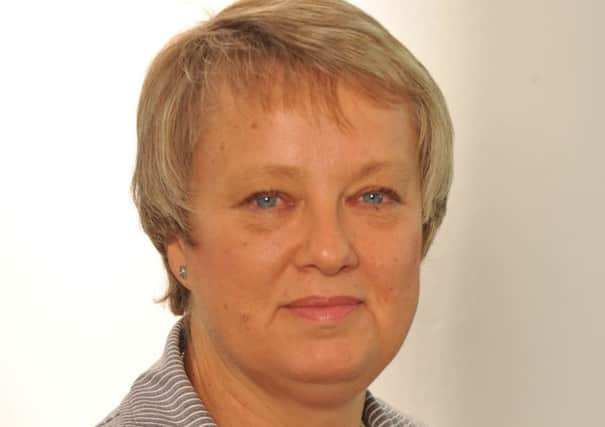Lending reforms putting mortgages beyond reach


Mortgage lenders are under growing pressure to do more for older borrowers amid claims many retired homeowners are being frozen out of the market.
Borrowers in their 70s, 60s and even 50s are struggling to secure finance as lenders tighten their criteria in response to the introduction in April of new affordability rules.
Advertisement
Hide AdAdvertisement
Hide AdThey were part of the Mortgage Market Review (MMR), aimed at preventing irresponsible lending. It puts the onus on lenders to take full responsibility for ensuring borrowers can repay their loan.
Retirees were facing an uphill battle to secure mortgage finance even before the MMR took effect. But many lenders are now imposing restrictions on the age to which they’ll allow a mortgage to run, regardless of the borrower’s ability to repay.
That means retirees with mortgages still to repay are running into difficulties when they want to make changes such as downsizing or remortgaging.
Robin Purdie, director of MOV8 Financial in Edinburgh, said: “Nowadays the vast majority of lenders will not permit lending past 75, and anything past 70 is going to require close scrutiny of projected income in retirement.
“Nobody wants a return to reckless lending, but the options are limited for those in their mid-late 50s, particularly if they’re looking to move up the [property] ladder.”
Lenders were last week accused by one building society of “running scared of older borrowers”.
They also came under fire in the House of Lords this month for failing to act in the “spirit” of the MMR.
Lord Newby, a Liberal Democrat peer, called on the Financial Conduct Authority (FCA) to look into whether older borrowers were being treated fairly by lenders. However, the regulator is already on the case, judging by recent comments from Linda Woodall, director of mortgages and consumer lending at the FCA.
Advertisement
Hide AdAdvertisement
Hide AdShe told a Council of Mortgage Lenders (CML) conference the City watchdog would be taking a closer look at lending policies, suggesting that some firms were applying the rules too rigidly.
But conditions will improve for older borrowers as the regulator clarifies its stance on what it considers acceptable in terms of income verification and expenditure, the CML has said.
The greatest difficulties face retired borrowers on interest-only mortgages, which very few lenders now offer.
More than eight in ten borrowers with interest-only loans maturing over the next decade have no repayment plan, it is estimated.
A growing number are turning to equity release. The most popular form being a lifetime mortgage, where a loan is taken out against the home as a lump sum or regular payments (or combination of the two). Lifetime mortgages accounted for almost 40 per cent of loans advanced to over 65s last year, and nine in ten to borrowers aged 85 and over, CML figures show. And the market is set to expand, with several major lenders preparing to shift interest-only borrowers on to lifetime mortgages if they are unable to clear their debt by the time their loan expires. But while these can be helpful for retired borrowers with no other way of repaying their loan, said Purdie, there are pitfalls to look out for.
“The terms should be closely scrutinised along with the rates and fees,” he said. “This is particularly relevant if the interest is to be ‘rolled up’, and all family members/beneficiaries should be consulted.” That’s because “rolled up” interest can mount up rapidly and reduce the equity in the property. “It could lead to some very disgruntled beneficiaries, so proper advice for older borrowers is essential,” said Purdie.
Gender savings gap is still widening
More women in Scotland are setting money aside for retirement as reforms to workplace pensions boost savings levels, new research shows.
However, the gender savings gap continues to widen, according to the annual Women and Retirement report from Scottish Widows.
Advertisement
Hide AdAdvertisement
Hide AdIt found that half of Scotland’s female population is now preparing “adequately” for retirement, up from just 44 per cent a year ago. The proportion of men in Scotland that are saving adequately has jumped from 49 to 60 per cent over the same period.
The report defines “adequate” as saving at least 12 per cent of their income or expecting their primary retirement income to come from a final salary pension.
Men are also saving considerably more each month, reflecting the persistent gender pay gap. The average female saver in Scotland is putting £187 a month away for retirement, compared with the £256 a month that men are typically saving.
The gap in workplace contributions has narrowed, however, following the 2012 launch of automatic enrolment. Women are now saving an average of £42.51 into their workplace pensions, compared with the male average of £49.27.
Lynn Graves, retirement expert at Scottish Widows, said: “A record 1.28 million women are now employed in Scotland overall, but just a third of them are currently part of a company pension scheme, with a greater tendency towards career breaks and part-time working largely responsible for this.
“The continued roll-out of auto enrolment should see this figure continue to increase, however we must not be complacent, and need to explore how saving for retirement outside of paid employment can also be made easier so women are not left out in the cold.”
SUBSCRIBE TO THE SCOTSMAN’S BUSINESS BRIEFING